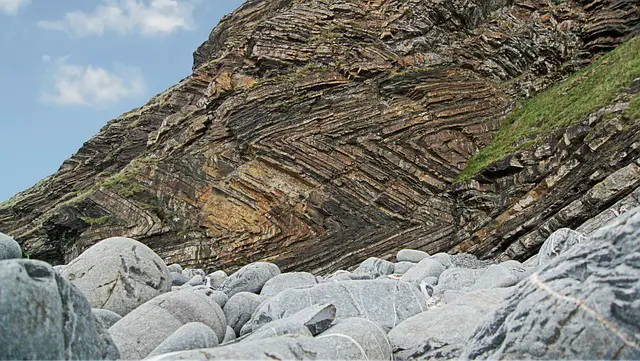When it comes to wine, clarity is often associated with quality. But what if we told you that a little bit of sediment in your glass could actually be a good thing? That’s right, the presence of sediment in wine has long been a topic of debate among wine enthusiasts. Some believe it adds depth and complexity to the taste, while others view it as a defect. In this article, we will delve into the world of wine sediment, exploring the facts behind its formation, its impact on flavor, and whether it is something to celebrate or avoid. So, grab your favorite glass of vino and let’s uncover the truth about sediment in wine.
Obsah
- 1. Understanding Sediment in Wine: Unveiling the Different Types and Origins
- 2. Does Sediment Impact the Taste of Wine? Exploring the Influences and Potential Benefits
- 3. The Role of Sediment in Wine Aging: Delicate Balance between Complexity and Clarity
- 4. Sediment in Red Wines: Embrace or Remove? Expert Recommendations for Enjoyment
- 5. Decanting Wine with Sediment: Dissecting the Proper Techniques and Best Practices
- 6. Filtering and Fining: How Winemakers Handle Sediment to Achieve Optimal Quality
- 7. Debunking Common Misconceptions: Separating Fact from Fiction about Sediment in Wine
- 8. Enhancing the Wine Experience: Embracing Sediment or Seeking Clarity – The Final Decision
1. Understanding Sediment in Wine: Unveiling the Different Types and Origins
When it comes to wine, sediment is a natural occurrence that often perplexes wine enthusiasts. This intriguing phenomenon can give both red and white wines a cloudy appearance, causing concern for many consumers. To demystify sediment in wine, it is vital to understand the different types and origins.
Types of Sediment:
- Tannins: Tannins are natural compounds found in grape skins, seeds, and stems. Over time, these sediment-forming substances settle at the bottom of the bottle, lending a gritty or sandy texture to the wine.
- Yeast: Yeast sediment is commonly found in sparkling wines and some white wines. The yeast cells consume sugar during fermentation, creating carbon dioxide and settling as sediment at the bottom.
- Pigments: Pigments are responsible for the color of red wines, and some pigments may clump together and form sediment. This sediment can appear as dark flakes or particles.
Origins of Sediment:
- Aging: As wines age, sediments naturally develop, especially in red wines. This sediment is formed by chemical reactions between various compounds, resulting in a richer and more complex flavor profile.
- Filtration: Some winemakers intentionally opt for minimal filtration to preserve the natural characteristics of the wine. Consequently, sediments that would typically be removed during filtration remain in the bottle, providing a unique and unfiltered drinking experience.
- Bottle Aging: Sediment can also accumulate in the bottle when it undergoes prolonged cellaring. Over time, certain elements in the wine become less soluble and form sediment, emphasizing the wine’s maturity and potential for further development.
Understanding the types of sediment and their origins can help wine lovers appreciate the complexity and evolution of their favorite vintages. So, the next time you pour a glass with a hint of cloudiness, embrace the sediment as a natural part of the winemaking process, an indication of the wine’s journey from grape to bottle.
2. Does Sediment Impact the Taste of Wine? Exploring the Influences and Potential Benefits
When it comes to wine, sediment is often a topic of discussion among connoisseurs. But does sediment really impact the taste of wine? The answer is yes, and understanding the influences of sediment can enhance your appreciation of this complex beverage. Here, we delve into the aspects that sediment brings to the wine experience, as well as the potential benefits it may offer.
Influences of Sediment:
- Mouthfeel: Sediment can subtly affect the texture of a wine, adding a certain richness and depth to the overall mouthfeel. As it sits at the bottom of the bottle, the wine on top continues to interact with the sediment, softening its tannins and providing a smoother palate.
- Flavor Development: Sediment can contribute to the maturation process of a wine, allowing it to age gracefully and develop more complex flavors. As the wine ages, certain compounds in the sediment can interact with the liquid, enhancing its aromatic profile and adding depth to the taste.
- Decanting Potential: Sediment is one of the main reasons why many wines benefit from decanting. By carefully pouring the wine off the sediment, you can separate it from the liquid, resulting in a clearer and more vibrant wine.
Potential Benefits of Sediment:
- Authenticity: Wines with sediment often indicate that minimal intervention techniques were used during production, highlighting the natural essence of the grape. This can offer a more authentic taste and a connection to the winemaking process.
- Ageability: Sediment is typically seen in wines that have the potential to age well. These wines often have more structure and complexity, allowing them to mellow gracefully over time. If you enjoy the intricate character of aged wines, seeking out sediment-rich bottles can provide a rewarding experience.
- Conversation Starter: The presence of sediment in a wine can spark interesting conversations and add intrigue to a tasting experience. It offers an opportunity to discuss winemaking methods, grape varietals, and the unique qualities that sediment brings to different wines.
3. The Role of Sediment in Wine Aging: Delicate Balance between Complexity and Clarity
The role of sediment in wine aging is a critical aspect that contributes to the complex and delicate flavors in a bottle of wine. Sediment refers to the solid particles that naturally precipitate and settle at the bottom of a wine bottle during the aging process. While some may assume that sediment is undesirable, it actually plays a vital role in enhancing the character and quality of aged wines.
One of the key benefits of sediment is that it aids in the development of complexity. As wines age, chemical reactions occur between the wine’s compounds, leading to the formation of new aromatic and flavor compounds. Sediment, consisting of dead yeast cells, grape skin particles, and grape solids, acts as a catalyst for these reactions by providing a surface area for the compounds to interact and evolve. The interaction between the wine and sediment results in the enrichment of fruity, earthy, and savory aromas, as well as an increase in the wine’s overall complexity.
Moreover, sediment plays a crucial role in clarifying aged wines. As the wine sits undisturbed, the heavy sediment particles slowly settle at the bottom, allowing the wine to clarify over time. This process helps remove any suspended particles, which could otherwise affect the wine’s visual appeal and mouthfeel. By reducing cloudiness and enhancing transparency, the sediment contributes to the overall aesthetic quality of the wine, ensuring a visually appealing and pleasurable drinking experience.
4. Sediment in Red Wines: Embrace or Remove? Expert Recommendations for Enjoyment
When it comes to sediment in red wines, there has been an ongoing debate among wine lovers – should it be embraced or removed? While some may find sediment off-putting, others argue that it adds complexity and character to the wine. As experts in the field, we are here to provide you with recommendations to enhance your enjoyment.
To embrace or remove sediment ultimately depends on personal preference. However, it is important to note that sediment is a natural occurrence in red wines and can be an indicator of quality and age. Here are some expert recommendations to consider:
- Decanting: If you prefer to remove sediment, decanting the wine is the way to go. Gently pouring the wine into a decanter will allow the sediment to settle at the bottom, and you can carefully pour off the clear wine, leaving the sediment behind.
- Embracing the sediment: On the other hand, if you appreciate the added flavors and textures that sediment can bring, there is no need to remove it. Simply pouring the wine into your glass and allowing the sediment to settle provides a unique tasting experience.
Keep in mind that not all red wines will have sediment, as it typically forms during the aging process. It is more commonly found in full-bodied wines like Cabernet Sauvignon or older vintages. Regardless of your preference, understanding the role of sediment in red wines can help you make an informed decision on whether to embrace or remove it.
5. Decanting Wine with Sediment: Dissecting the Proper Techniques and Best Practices
When it comes to enjoying a good bottle of wine, decanting can play a crucial role in enhancing its flavor and ensuring a smooth drinking experience. However, there are certain wines that may have sediment, which can affect both the taste and appearance. In this post, we will guide you through the proper techniques and best practices for decanting wine with sediment, so you can fully appreciate your wine without any unwanted residue.
1. Choose the right decanter: Opt for a decanter with a wide base and a narrow neck to allow the sediment to settle easily at the bottom, keeping it separate from the wine you pour.
2. Store your bottle upright: Before decanting, make sure you store the bottle upright for a day or two. This allows the sediment to settle at the bottom, making it easier to remove when pouring.
3. Handle the bottle with care: When you’re ready to decant, gently remove the cork/stopper and wipe the bottle neck to remove any debris that may have accumulated.
4. Slowly pour the wine: Position the decanter at a slight angle and pour the wine slowly, ensuring a steady stream. Be mindful of the sediment, stopping the pour before it reaches the neck of the bottle.
5. Leave the sediment behind: As you pour, keep an eye on the sediment accumulating at the base of the bottle. Once you spot the sediment reaching the neck, pause the pour and leave the remaining bit of wine and sediment behind.
By utilizing these techniques, you’ll be able to decant your wine with sediment effectively, leaving you with a refined, sediment-free glass of wine ready to be enjoyed. Remember, patience is key in this process, so take your time and savor the end result.
6. Filtering and Fining: How Winemakers Handle Sediment to Achieve Optimal Quality
In the world of winemaking, achieving optimal quality is key. One crucial aspect of this process is filtering and fining the wine to remove any unwanted sediment. Sediment refers to the solid substances that can naturally occur during fermentation or as a result of the aging process. By employing various techniques, winemakers ensure that the final product is smooth, clear, and visually appealing.
Filtering is a common method used to eliminate sediment from the wine. It involves passing the liquid through a medium, such as diatomaceous earth, to trap and remove particles. This process can be executed in several ways, including:
- Mechanical filtration: Utilizing physical barriers like membranes or porous materials to separate sediment from the wine. This technique effectively removes larger particles such as grape skins or seeds.
- Microfiltration: Employing microscopic filters that catch smaller particles like yeast cells or bacteria. This method helps refine the wine’s flavor and texture.
- Membrane filtration: Utilizing semipermeable membranes with different pore sizes to retain specific-sized particles. This technique allows for precise control over the filtration process, resulting in wines of exceptional clarity.
Fining, on the other hand, involves the addition of fining agents to further clarify the wine. These substances act as magnets, attracting and binding with unwanted particles, making them easier to remove. Some common fining agents include:
- Bentonite: A type of clay that helps remove proteins and prevent haze formation in white wines.
- Activated carbon: Effective in removing color compounds and off-flavors caused by various wine faults.
- Gelatin: Typically used in red wines to eliminate harsh tannins and enhance mouthfeel.
- Isinglass: Derived from fish bladders, this agent is used to clarify both white and red wines by removing suspended particles.
By employing these filtering and fining techniques, winemakers can ensure that their wines achieve the desired level of clarity, stability, and quality. The careful handling of sediment ultimately contributes to the overall enjoyment and appreciation of the final product by wine enthusiasts worldwide.
7. Debunking Common Misconceptions: Separating Fact from Fiction about Sediment in Wine
In the world of wine, there are often misconceptions that can cloud our understanding of sediment. Let’s dive into some common myths and separate fact from fiction to shed light on this fascinating topic.
Myth 1: Sediment in wine indicates low quality:
Contrary to popular belief, the presence of sediment in wine is not a sign of inferior quality. Sediment can develop naturally during the aging process and is more commonly found in red wines, particularly those with higher tannin levels. Sediment consists of harmless solids such as grape skins, pulp, or tannins that precipitate over time. In fact, some wine enthusiasts even consider sediment as a mark of authenticity and complexity, as it can enhance the flavor and texture of the wine.
Myth 2: Sediment in wine means it has gone bad:
It’s important to understand that sediment is not a definitive indicator of spoilage or wine turning bad. Proper winemaking techniques, including careful racking and fining, aim to reduce the presence of sediment in bottled wines. However, as wines age, some sediments may naturally occur. The appearance of sediment should not be confused with signs of spoilage, such as off-putting smells or flavors. Instead, it is often a sign of an unfiltered or less manipulated wine, which can exhibit unique and desirable characteristics.
8. Enhancing the Wine Experience: Embracing Sediment or Seeking Clarity – The Final Decision
Embracing Sediment:
For some wine enthusiasts, embracing sediment is like unlocking a hidden treasure. Sediment, which is naturally formed during the aging process, is often viewed as a testament to the wine’s authenticity and character. It is composed of tannins, pigments, and grape residues that have precipitated over time. Connoisseurs argue that allowing the sediment to settle in the bottle before pouring enhances the wine’s flavors, aromas, and overall complexity. By carefully decanting the wine, you can separate the sediment from the liquid, ensuring a smooth and enjoyable drinking experience. Embracing sediment not only adds an element of tradition and authenticity to your wine tasting, but it also allows you to appreciate the wine’s evolution.
So why embrace sediment? Here are a few reasons:
- Enhanced flavor: Sediment can contribute a subtle richness and depth to the wine. By leaving the sediment undisturbed, you allow these flavors to integrate, resulting in a more nuanced drinking experience.
- Visual appeal: Sediment adds character and uniqueness to the wine. The presence of delicate particles swirling in the glass can be visually enchanting, captivating your senses even before taking the first sip.
- Historical significance: Many renowned wines are known for their sediment, which has become a part of their legacy. Embracing sediment is a nod to the age-old winemaking techniques and traditions that have shaped the industry.
Seeking Clarity:
On the other hand, some wine lovers prefer a crystal-clear drinking experience, free from any unwanted particles. Seeking clarity involves the removal of sediment from the wine, either through careful decanting or by using filtration methods. Clear wine is often associated with elegance and purity, allowing the drinker to fully appreciate the wine’s pristine qualities without any distractions.
If you choose to seek clarity, here are a few benefits:
- Aesthetic appeal: Clear, sediment-free wine can showcase its vibrant color and clarity in the glass, enhancing the overall visual appeal of the wine.
- Consistent taste: By removing sediment, you ensure a consistent taste throughout the glass. This can be especially important if you plan to enjoy the wine over an extended period.
- Elimination of bitterness: Some sediment can contribute bitterness or a gritty texture to the wine. Seeking clarity ensures a smoother, more refined drinking experience.
In conclusion, the presence of sediment in wine can be both good and bad, depending on personal preferences. It’s important to learn the facts and make an informed decision based on your taste preferences.









